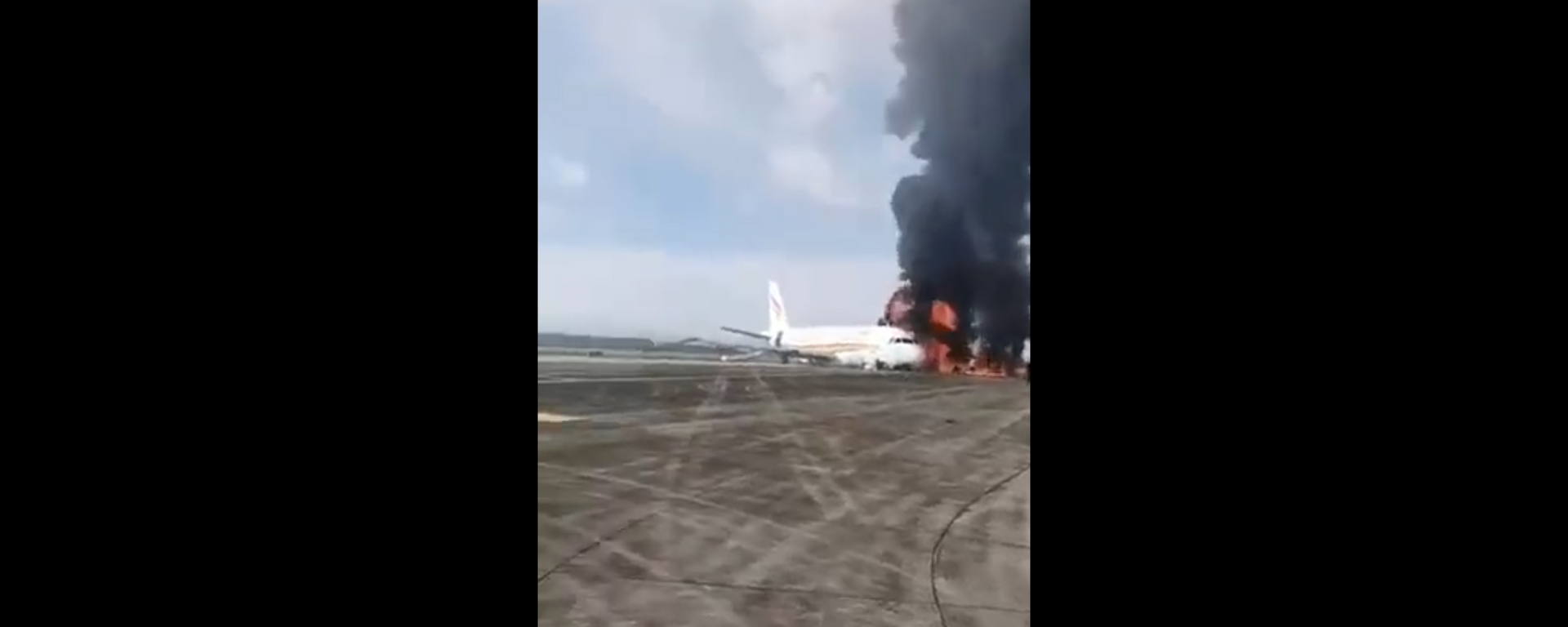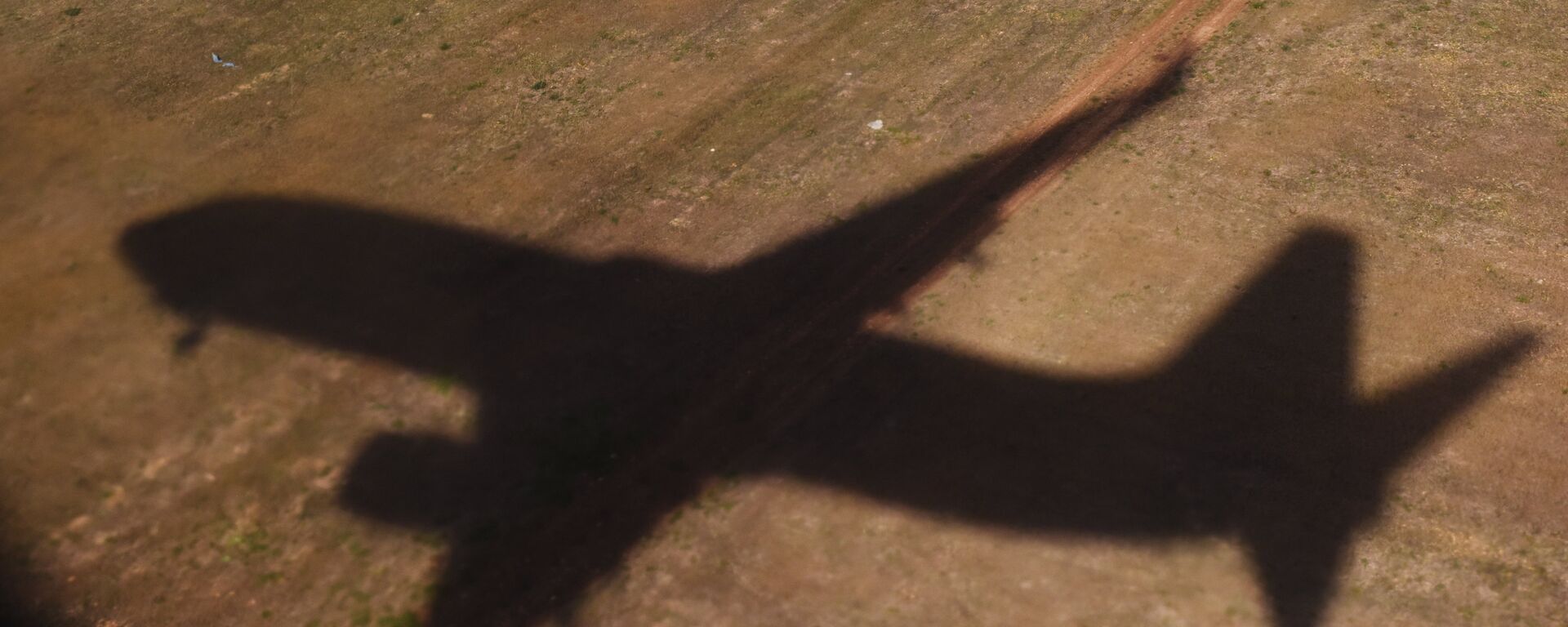https://sputnikglobe.com/20220521/beijing-calls-on-whistleblowers-to-identify-aviation-safety-oversights-in-wake-of-major-accidents--1095694191.html
Beijing Calls on ‘Whistleblowers’ to Identify Aviation Safety Oversights in Wake of Major Accidents
Beijing Calls on ‘Whistleblowers’ to Identify Aviation Safety Oversights in Wake of Major Accidents
Sputnik International
Beijing’s civil aviation authority released a preliminary report last month detailing that no explosives were found at the site of a China Eastern Airlines... 21.05.2022, Sputnik International
2022-05-21T23:47+0000
2022-05-21T23:47+0000
2022-11-03T19:34+0000
china
tibet
faa
us federal aviation administration
boeing 737-800
commercial
aviation
civil aviation
boeing
plane crash
https://cdn1.img.sputnikglobe.com/img/07e6/05/15/1095694046_0:0:1920:1080_1920x0_80_0_0_39853bcd47ffa53e5c4a847fd024b9f1.jpg
As the government continues to probe the deadly China Eastern crash, the Civil Aviation Administration of China (CAAC) is also urging frontline and grass-root management officials to promptly report any potential safety oversights in an expanded effort to reign in apparent lapses in aviation safety.Whistleblowers who choose to report such concerns will be rewarded and provided confidentiality agreements to protect their identity, according to China’s civil aviation authority.China’s three major carriers–Air China, China Eastern Airlines and China Southern Airlines–are under the watch of the country’s state council.The document was released exactly a week after 36 individuals were injured evacuating Tibet Airlines A319, from Chongqing to Nyingchi, after the aircraft endured a catastrophic runway episode that ended in the plane catching fire on the tarmac.All 113 passengers and nine crew members were confirmed safe following the May 12 incident.The aborted Tibet Airlines flight, particularly when coupled with the China Eastern Airlines tragedy, reminds some of China’s unfavorable aviation safety record back in the late 1980s and early 2000s, when Beijing moved to reform its aviation industry and overhaul associated regulations.Boeing and the US Federal Aviation Administration notably assisted with the overhaul of related regulations.China initially responded to the fatal March 21 flight by ordering sector-wide inspections to better identify potential safety lapses. The latest move by the CAAC seeks to expand on this by allowing more individuals to have their aviation security concerns heard first-hand.The Wall Street Journal reported on Friday that black box data recovered from the downed 737 suggests that the aircraft did not malfunction when it began to nosedive at 29,000 feet (8,839 meters), as it was controlled by human input orders before crashing into the mountains.Both devices were recovered from the Guangxi crash site and transported to Washington, DC, for analysis.
https://sputnikglobe.com/20220512/video-plane-skids-off-runway-catches-fire-in-chinas-chongqing-injured-reported-1095449029.html
https://sputnikglobe.com/20220420/chinas-aviation-authority-says-no-dangerous-cargoes-found-on-board-of-crashed-boeing-737-1094914481.html
china
tibet
Sputnik International
feedback@sputniknews.com
+74956456601
MIA „Rossiya Segodnya“
2022
News
en_EN
Sputnik International
feedback@sputniknews.com
+74956456601
MIA „Rossiya Segodnya“
Sputnik International
feedback@sputniknews.com
+74956456601
MIA „Rossiya Segodnya“
china, tibet, faa, us federal aviation administration, boeing 737-800, commercial, aviation, civil aviation, boeing, plane crash
china, tibet, faa, us federal aviation administration, boeing 737-800, commercial, aviation, civil aviation, boeing, plane crash
Beijing Calls on ‘Whistleblowers’ to Identify Aviation Safety Oversights in Wake of Major Accidents
23:47 GMT 21.05.2022 (Updated: 19:34 GMT 03.11.2022) Beijing’s civil aviation authority released a preliminary report last month detailing that no explosives were found at the site of a China Eastern Airlines Boeing 737-800 that crashed in the mountains of Guangxi earlier this year, killing all 132 individuals on board. The crash is regarded as China’s largest aviation disaster in more than a decade.
As the government continues to probe the deadly China Eastern crash, the Civil Aviation Administration of China (CAAC) is also urging frontline and grass-root management officials to promptly report any potential safety oversights in an expanded effort to reign in apparent lapses in aviation safety.
“It is of great necessity that we fully mobilize the vast number of frontline personnel–for them to be willing and dare to be a safety 'whistle blower', which would also be crucial in reversing the current unfavorable situation and maintain the stable operations of the industry safety,” read a May 19 issuance from the CAAC, as reported by Reuters.
Whistleblowers who choose to report such concerns will be rewarded and provided confidentiality agreements to protect their identity, according to China’s civil aviation authority.
China’s three major carriers–Air China, China Eastern Airlines and China Southern Airlines–are under the watch of the country’s state council.
The document was released exactly a week after 36 individuals were injured evacuating Tibet Airlines A319, from Chongqing to Nyingchi, after the aircraft endured a catastrophic runway episode that ended in the plane catching fire on the tarmac.
All 113 passengers and nine crew members were confirmed safe following the May 12 incident.
The aborted Tibet Airlines flight, particularly when coupled with the China Eastern Airlines tragedy, reminds some of China’s unfavorable aviation safety record back in the late 1980s and early 2000s, when Beijing moved to reform its aviation industry and overhaul associated regulations.
Boeing and the US Federal Aviation Administration notably assisted with the overhaul of related regulations.
China initially responded to the fatal March 21 flight by ordering sector-wide inspections to better identify potential safety lapses. The latest move by the CAAC seeks to expand on this by allowing more individuals to have their aviation security concerns heard first-hand.
The Wall Street Journal reported on Friday that black box data recovered from the downed 737 suggests that the aircraft did not malfunction when it began to nosedive at 29,000 feet (8,839 meters), as it was controlled by human input orders before crashing into the mountains.
“The plane did what it was told to do by someone in the cockpit,” one source said to be familiar with the US’ preliminary assessment of information derived from the jet’s flight-data recorder and cockpit voice recorder.
Both devices were recovered from the Guangxi crash site and transported to Washington, DC, for analysis.
China Eastern Airlines has denounced unofficial speculation, highlighting that rushed determinations could hinder the full investigation. “Any unofficial speculation may interfere with the accident investigation and affect the real progress of the global air transport industry,” the government-run airline told the WSJ.
![3月25日,武警广西总队官兵同民兵、消防等救援力量一起,继续在“3.21”东航飞行事故现场展开搜救搜索
English: On March 25, the search continues [at the mountains of Guangxi, following the March 21 crash of a China Eastern Airlines Boeing 737-800. All 132 individuals aboard the aircraft were confirmed dead at the scene.]
3月25日,武警广西总队官兵同民兵、消防等救援力量一起,继续在“3.21”东航飞行事故现场展开搜救搜索
English: On March 25, the search continues [at the mountains of Guangxi, following the March 21 crash of a China Eastern Airlines Boeing 737-800. All 132 individuals aboard the aircraft were confirmed dead at the scene.]
- Sputnik International, 1920, 21.05.2022](https://cdn1.img.sputnikglobe.com/img/07e6/05/15/1095694046_0:0:1920:1080_1920x0_80_0_0_39853bcd47ffa53e5c4a847fd024b9f1.jpg)


